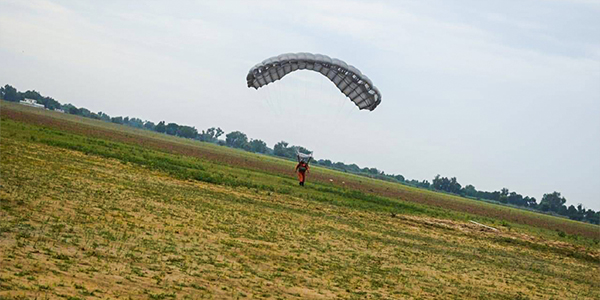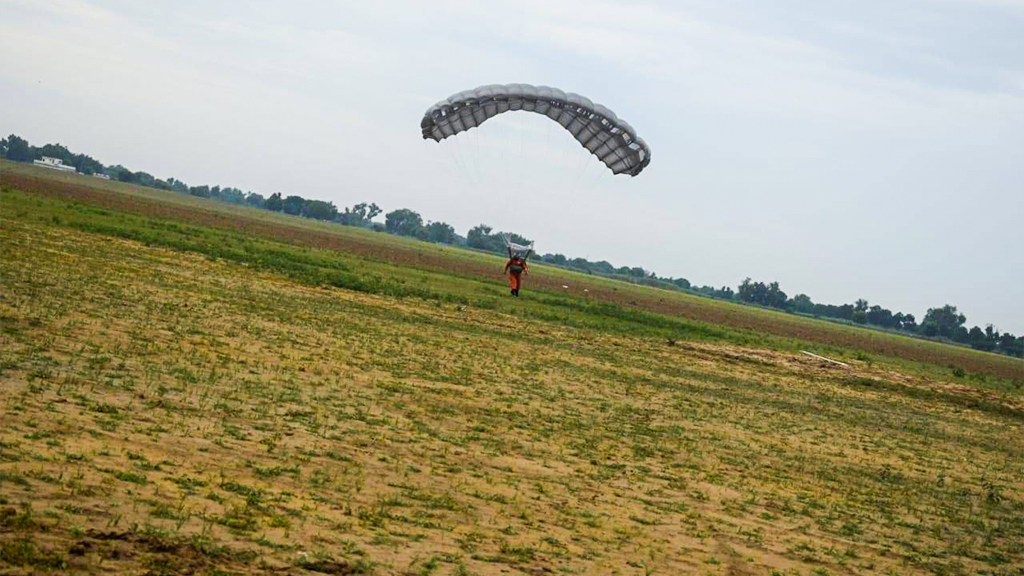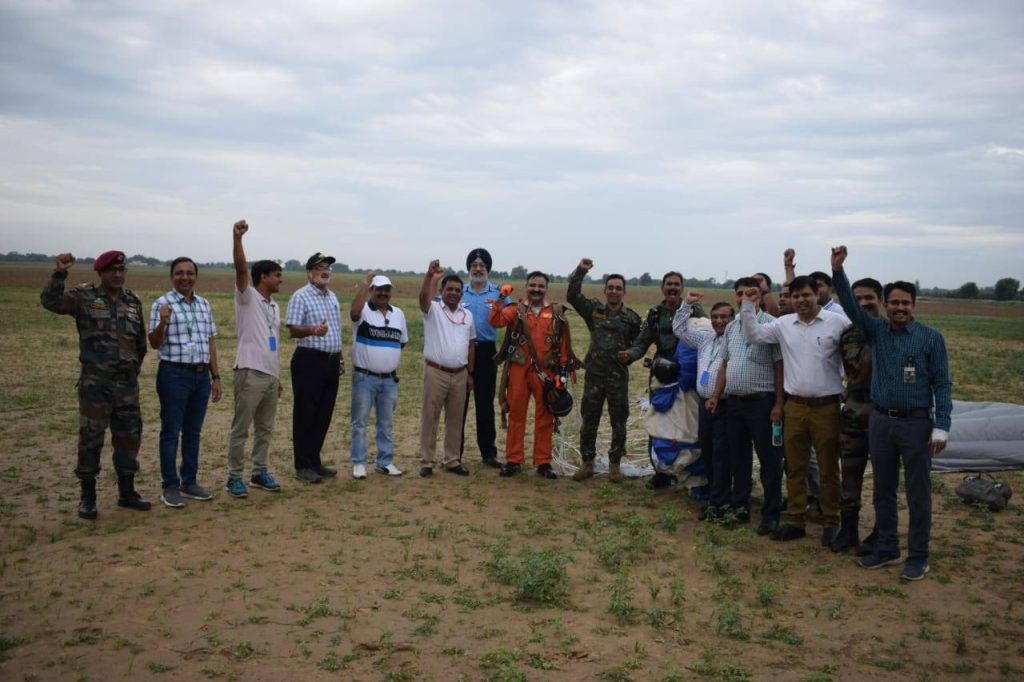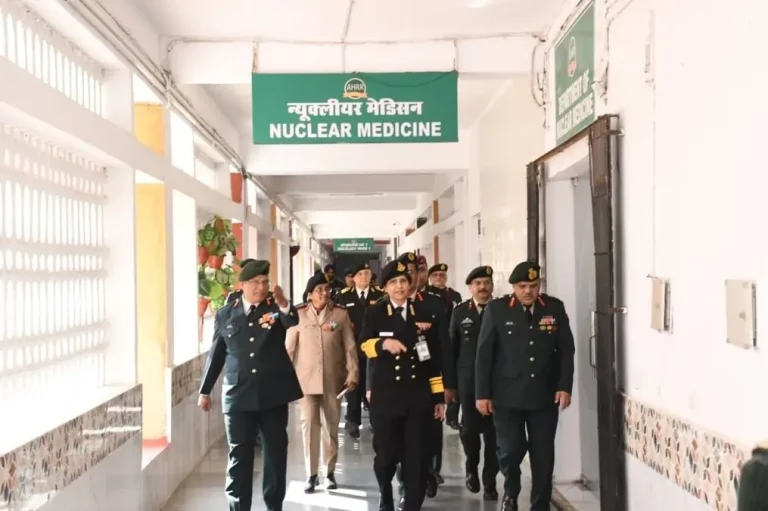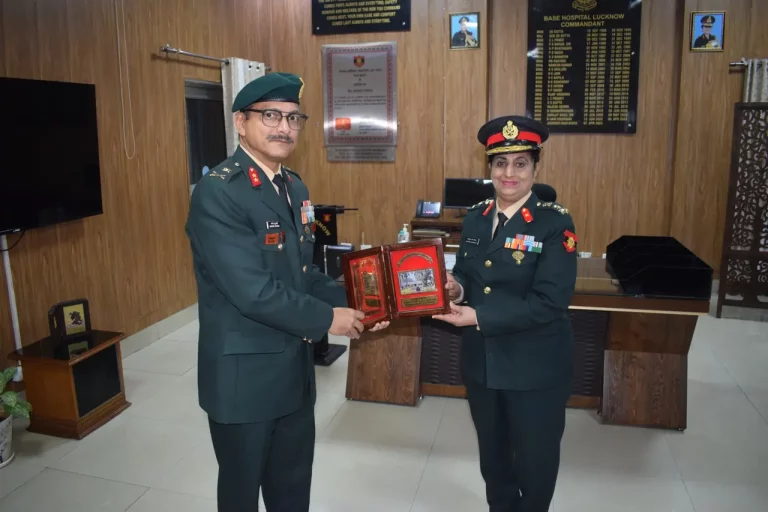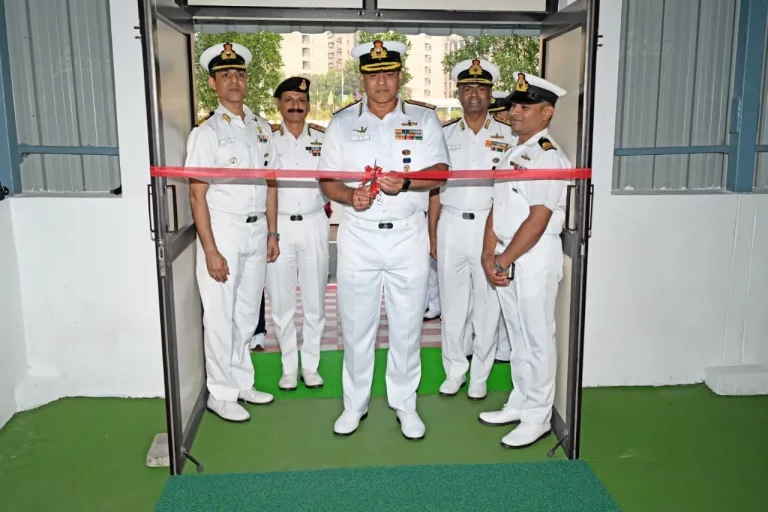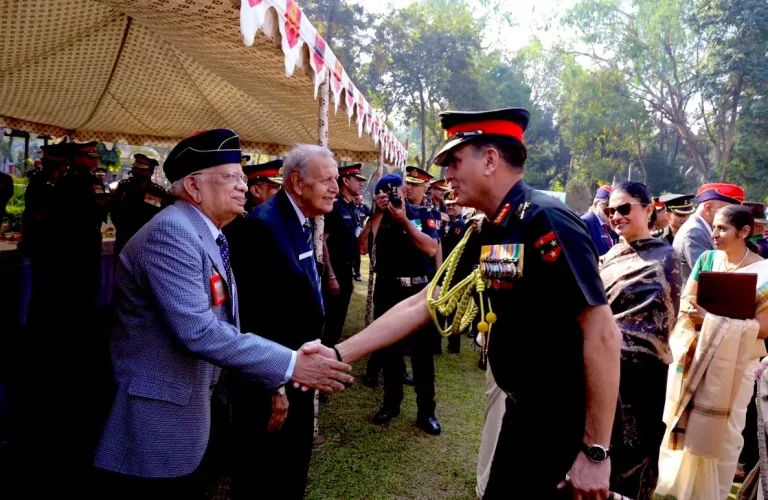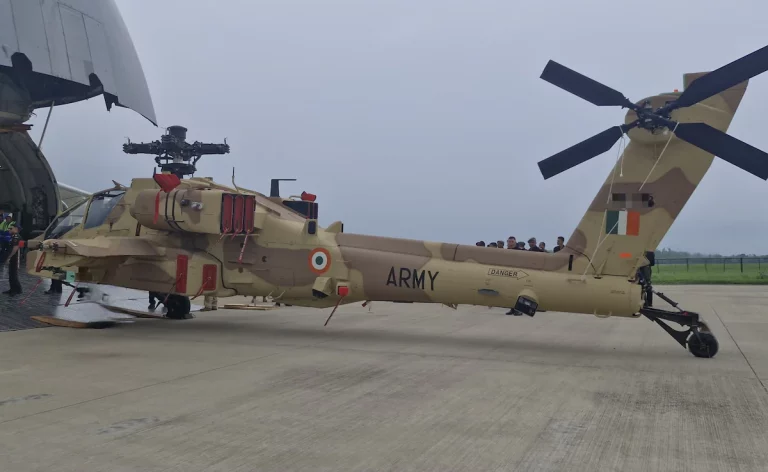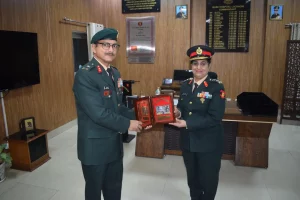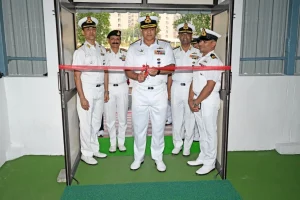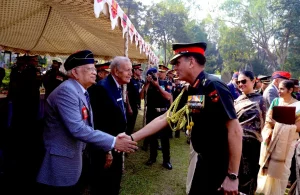Combat Parachute System: The Indian Air Force successfully tested the Paratroopers Tactical Assault-Static Line system, demonstrating its sophisticated tactical features. According to the Indian Air Force (IAF), a test jumper successfully completed a purposeful disconnection of the main parachute, allowing the reserve to deploy autonomously through the Reserve Static Line (RSL) before the Barometric Automatic Activation Device could engage.
Elevating Tactical Capabilities with Combat Parachute System
The Indian Air Force (IAF) introduced the Paratroopers Tactical Assault-Static Line (PTS-SL) system, an upgraded iteration of the current PTA (M) personnel parachute, to improve operational capabilities. According to DRDO sources, it possessed the lowest worldwide rate of descent and opening shock, as well as 360-degree steering capability. The parachute was designed to be deployed from low-flying and slow-moving aircraft such as the AN-32, C-130, C-17, MI-17, and others.
Weighing in at a maximum of 140 kg, it allowed for a max release speed of 240 Kmph. It ensured a controlled descent of less than 5 m/s for an overall weight of 140 kg with a drop altitude range of 250 m to 8000 m. The main parachute was a Toroidal design with a canopy size of 100 m2 and a system weight of less than 12 kg (excluding reserve), and it was released using a Main Static line. This technology provided a significant improvement in performance for IAF paratroopers.
Combat Parachute System Reserves: Safety at its core
The reserve parachute, a critical safety component of the IAF’s parachute systems, serves as a fail-safe mechanism in the event of main parachute failure. According to DRDO data, it had a flat circular design with a canopy cap for rapid deployment. However, IAF pictures revealed a more cruciform design. The previous canopy was made of 32 gsm Nylon fabric, and the suspension lines had a strength of 250 kilogram-force (kgf) for Nylon cordage and 318 kgf for Polyester cordage.
Older Parachute System in use of IAF
Over time, improvements were made to the previous PTA-M system, resulting in a considerable update with sophisticated aerodynamic features for smoother deployment and flight performance. This system could carry up to 120 kg of payload, travel at speeds of up to 240 km/h, and operate at altitudes as low as 250 metres above ground level. The primary parachute was aero conical in shape, with a diameter of 10 metres and a packed weight of 15 kg, resulting in a descent rate of 5-6 metres per second at sea level.
To crack the SSB Interview, You can join our SSB interview live classes batch and we recommend you to Enroll SSB INTERVIEW ONLINE COURSE. Trusted by thousands of defence aspirants.
